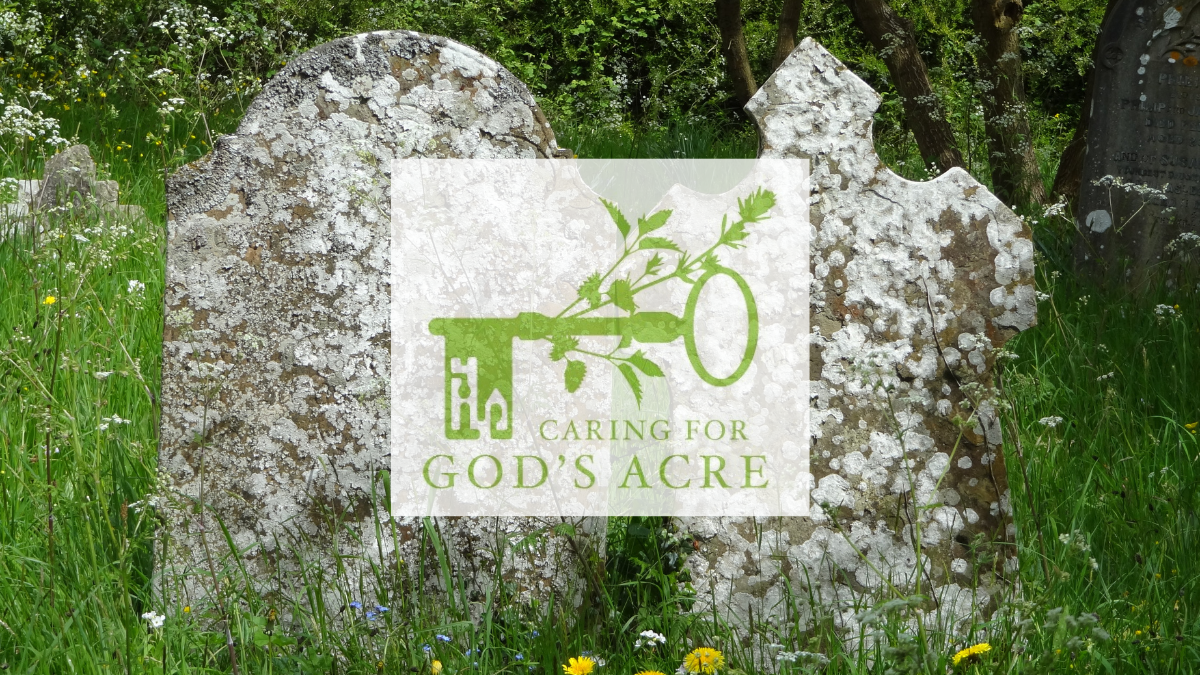
Churchyards are the ideal place for a lichen enthusiast to while away many happy hours. Lichens can be found on walls, monuments, trees and, if you have ancient grassland there may be lichens within the sward as well.
To the uninitiated lichens can look broadly similar with subtle mosaics of colour, often greys and yellows forming expanding circles as they increase in size as the years go by. There is more to lichens than meets the eye however. Firstly they are two or more organisms living together as one, usually a fungus and an algae. Fungus forms the visible part of the lichen and within, protected by threads of the fungus, are cells of algae and/or cyanobacteria which photosynthesise. So the fungus provides a home and the algae provides food. Lichens reproduce through microscopic fungal spores which, if they find a suitable partner, can colonise surfaces which are not too shaded or too smooth. These spores are released from structures which look rather like tiny jam tarts, flasks or pimples!
Lichens are fantastic at surviving where other life cannot. Provided there is enough light and moisture lichens are able to grow on bare stone, not needing cracks or soil to root into. Some lichens grow very slowly, perhaps half a millimetre per year whilst others grow more quickly. Many lichens are long-lived so the lichen you see in a churchyard may be almost as old as the wall or gravestone it is growing on. Astonishingly there are over 2,000 different lichen species and it is not unusual for a single churchyard to contain more than 100 different types.
Churchyards are particularly rich in lichens as they contain so many old stones with a variety of types; limestone, sandstone, granite to name a few. Some stones are smoother, others rough and they may have differing amounts of shade, wind and moisture depending on where they are within the churchyard, which side of the monument the lichen is on, whether they are vertical, leaning or flat. The carving of the inscription itself provides microclimates with different amounts of light and moisture within the lettering. All of these changes in conditions will suit different lichen species. They are also found on trees, wooden fences and gates, grassy areas, pathways and even dustbin lids!
Most lichens offer protection to the surface they grow on and it may be easier to read lettering which is lichen-covered rather than bare, eroding stone. They do not need much care but do avoid the use of any chemicals near to lichens and definitely don’t try and remove them. Lichens can die if shaded out so try and keep ivy or other climbers from encroaching over them too.
If you have never taken a closer look at a lichen then why not take a hand-lens or magnifying glass and give it a go. Lichen colonies have been described as minute, self-maintaining gardens, providing a natural cladding for the stone. They are beautiful and endlessly fascinating and if you like a challenge, why not look up the British Lichen Society website and find out more about how to identify them.
All the best,
Harriet Carty
Diocesan Churchyard Environmental Advisor
www.caringforgodsacre.org.uk - individuals and groups in the diocese receive 20% members discount on all CfGA materials. Use the discount code diomem22
